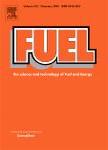版权所有:内蒙古大学图书馆 技术提供:维普资讯• 智图
内蒙古自治区呼和浩特市赛罕区大学西街235号 邮编: 010021

作者机构:Petr Univ Technol Petr Dept Ahvaz Iran Islamic Azad Univ Young Researchers Club Omidiyeh Branch Omidiyeh Iran DWA Energy Ltd Lincoln England Shiraz Univ Petr Dept Shiraz Iran
出 版 物:《FUEL》 (燃料)
年 卷 期:2017年第207卷
页 面:547-560页
核心收录:
学科分类:0820[工学-石油与天然气工程] 080702[工学-热能工程] 0817[工学-化学工程与技术] 08[工学] 0807[工学-动力工程及工程热物理]
主 题:Liquid critical-flow rate Non-linear regression Artificial neural network Teaching-learning-based optimization Empirical wellhead coke flow rate published correlations Relevancy factor
摘 要:Published relationships typically consider liquid critical-flow rate through wellhead chokes of producing oil wells as functions of wellhead pressure, choke size and gas-liquid ratio. Such correlations can be improved by taking into account three additional input variables: gas specific gravity, oil specific gravity and temperature. Novel liquid critical-flow rate models, hybridizing an artificial neural network (ANN) with a teaching-learning-based optimization (TLBO) algorithms, involving 3 and 6 input variables, demonstrate improved accuracy compared to nonlinear regression models, traditional ANN models and published correlations. The improved accuracy of the developed models is assessed statistically using a data set of 113 wellhead flow tests from oil wells in South Iran (with a full data listing included). The ANN-TLBO (6 parameters) developed model is the most accurate, yielding the best liquid critical-flow rate predictions for that data set: coefficient of determination of 0.981;root mean square error of 714;average relative error of 2.09%;and, average absolute relative error of 6.5%. The 6-parameters models outperform the 3-parameters models without over complicating model functionality. This justifies the consideration of all six input variables to deliver improved predictions of wellhead choke liquid critical-flow rates. Calculation of relevancy factors for the 6-parameters ANN-TLBO model to the data set for all six input variables reveals choke size and gas-liquid ratio have maximum and minimum influence in determining the liquid critical-flow rate, respectively. (C) 2017 Elsevier Ltd. All rights reserved.